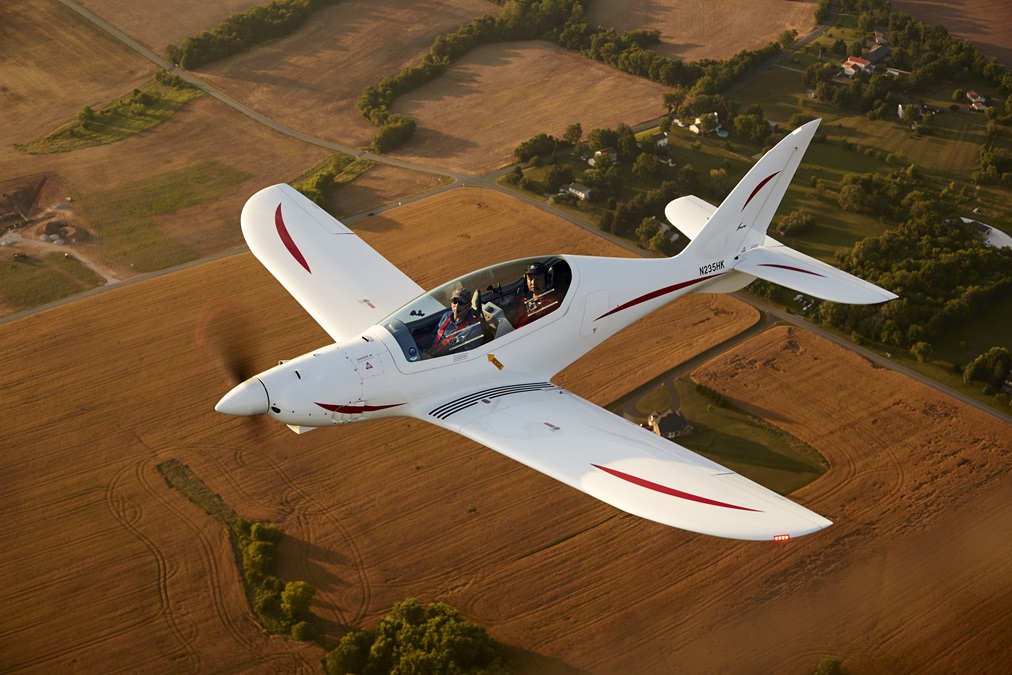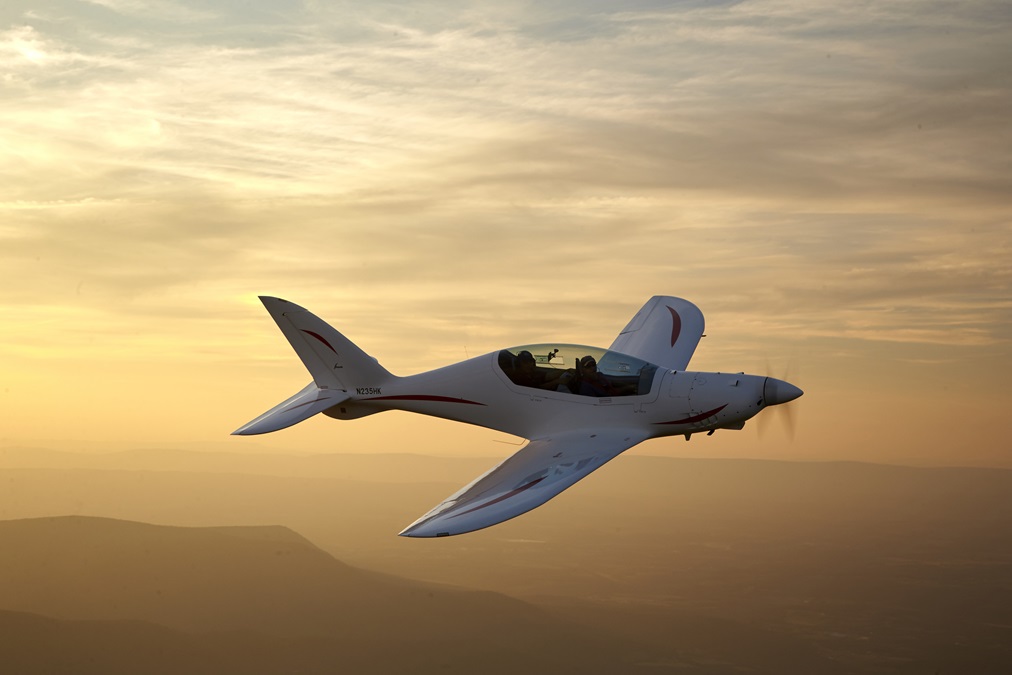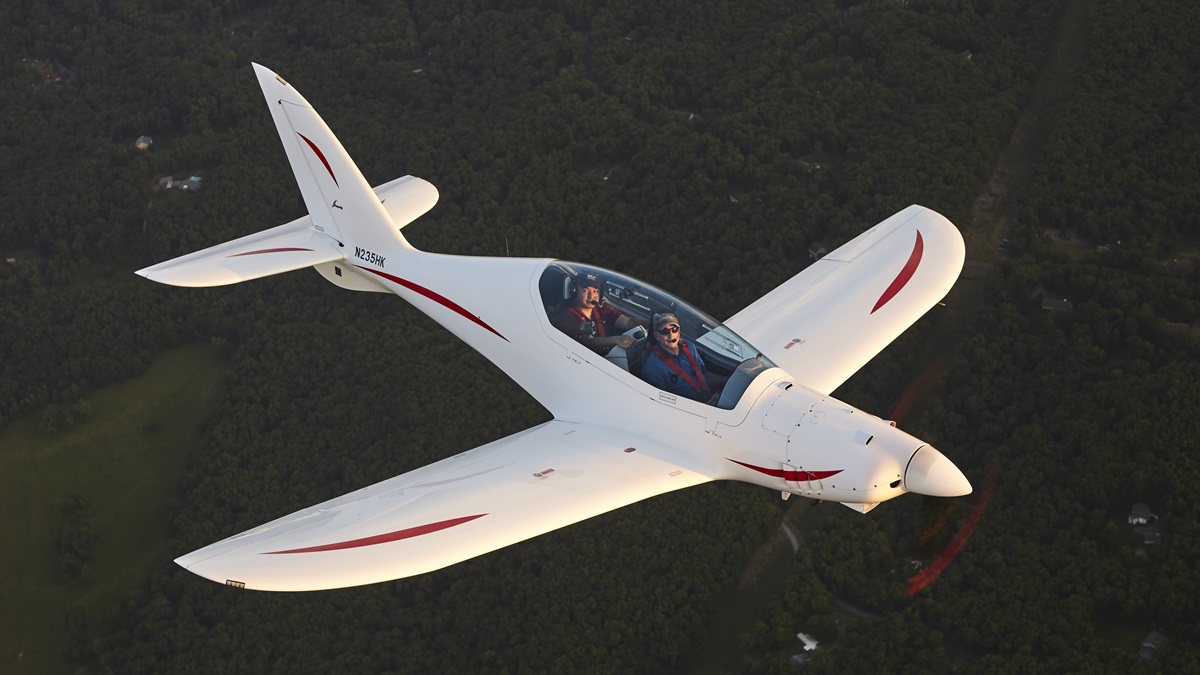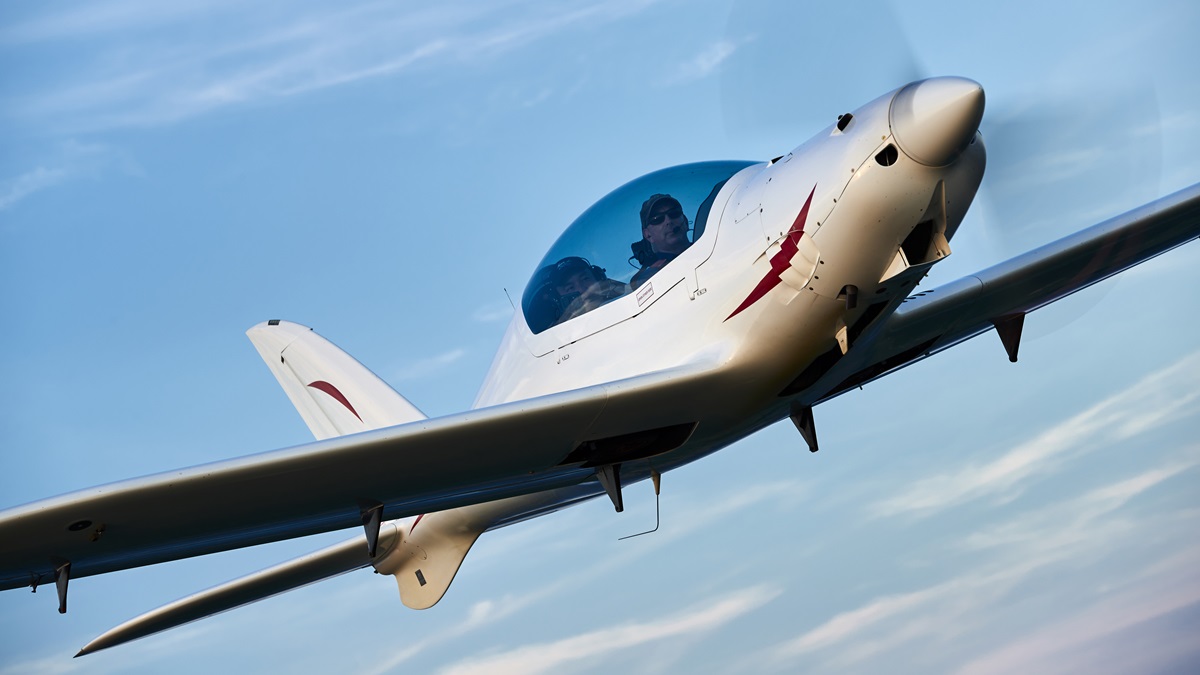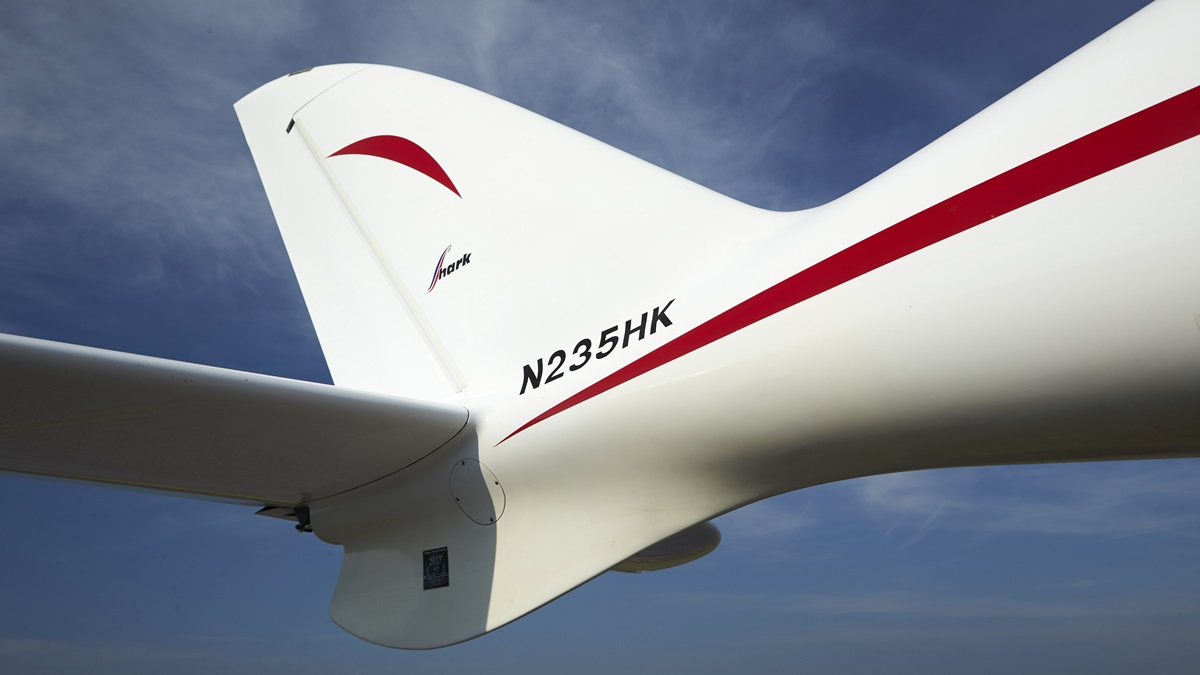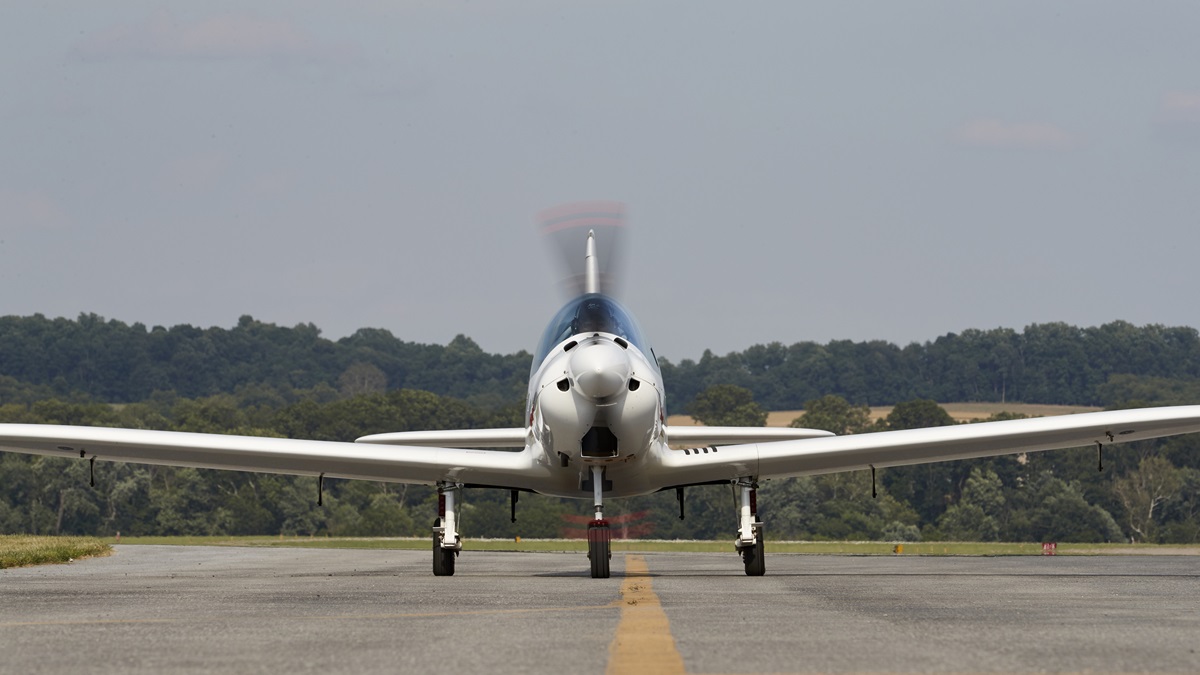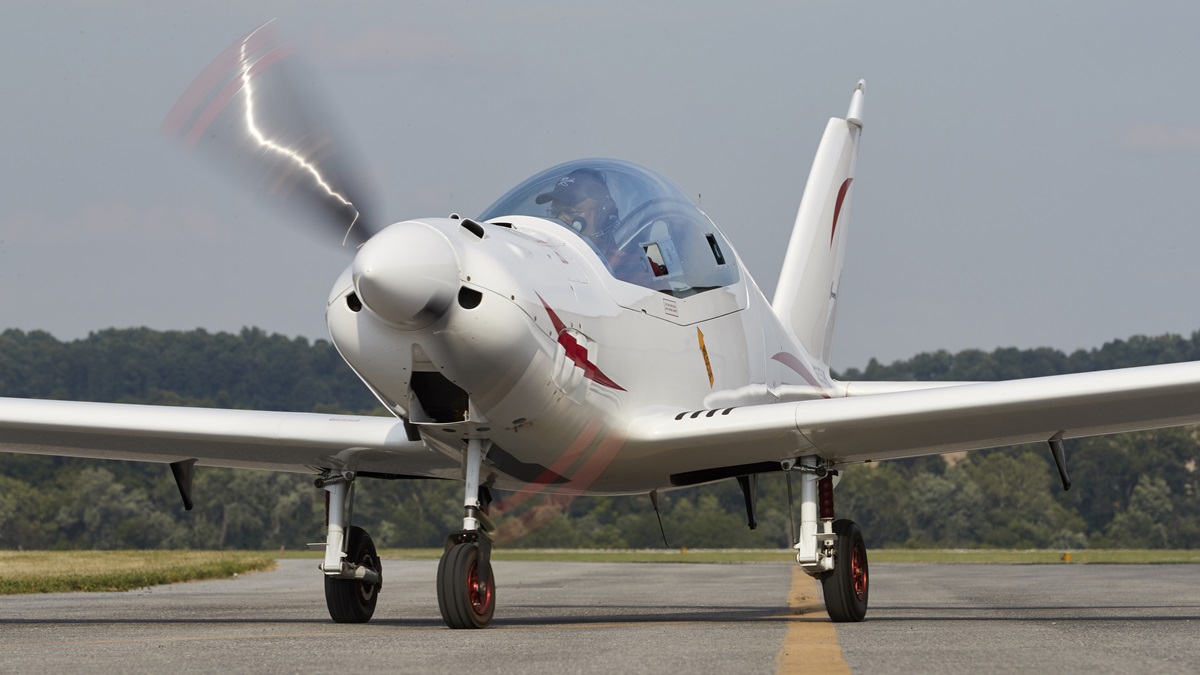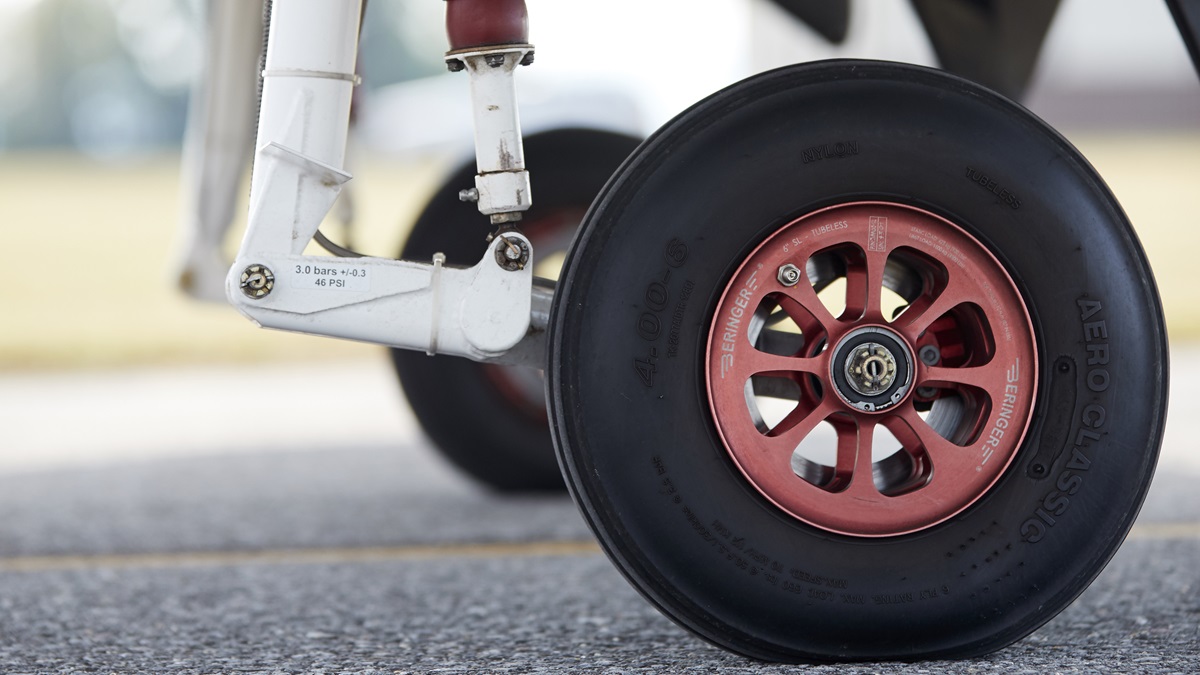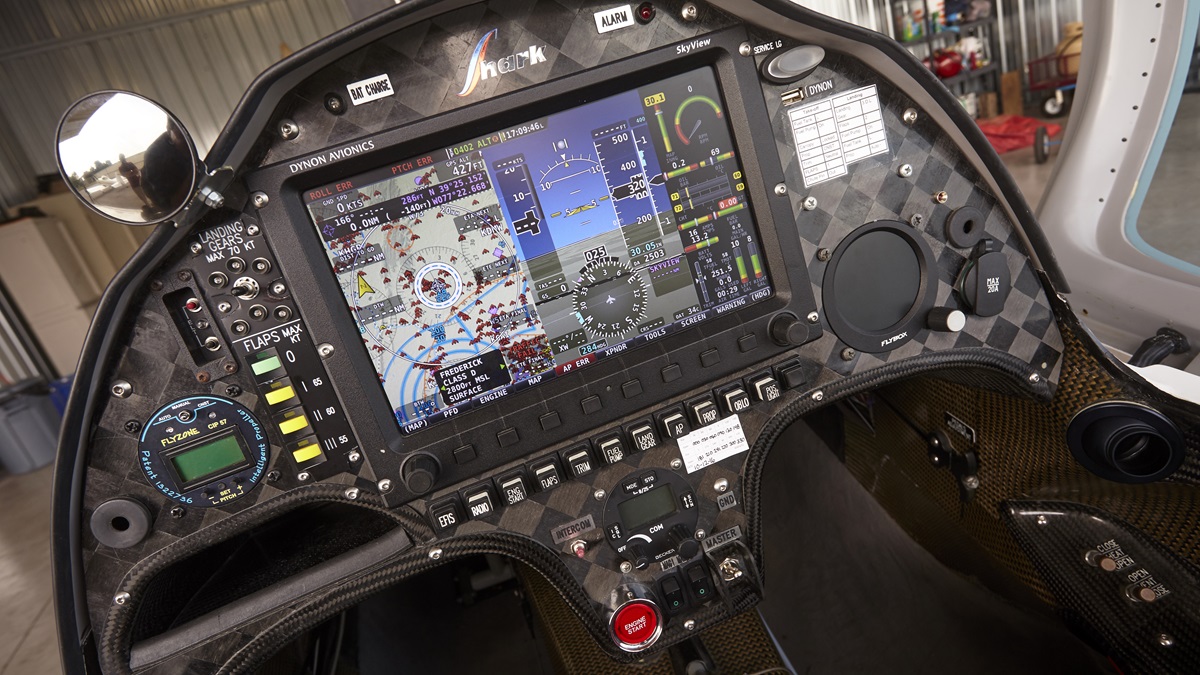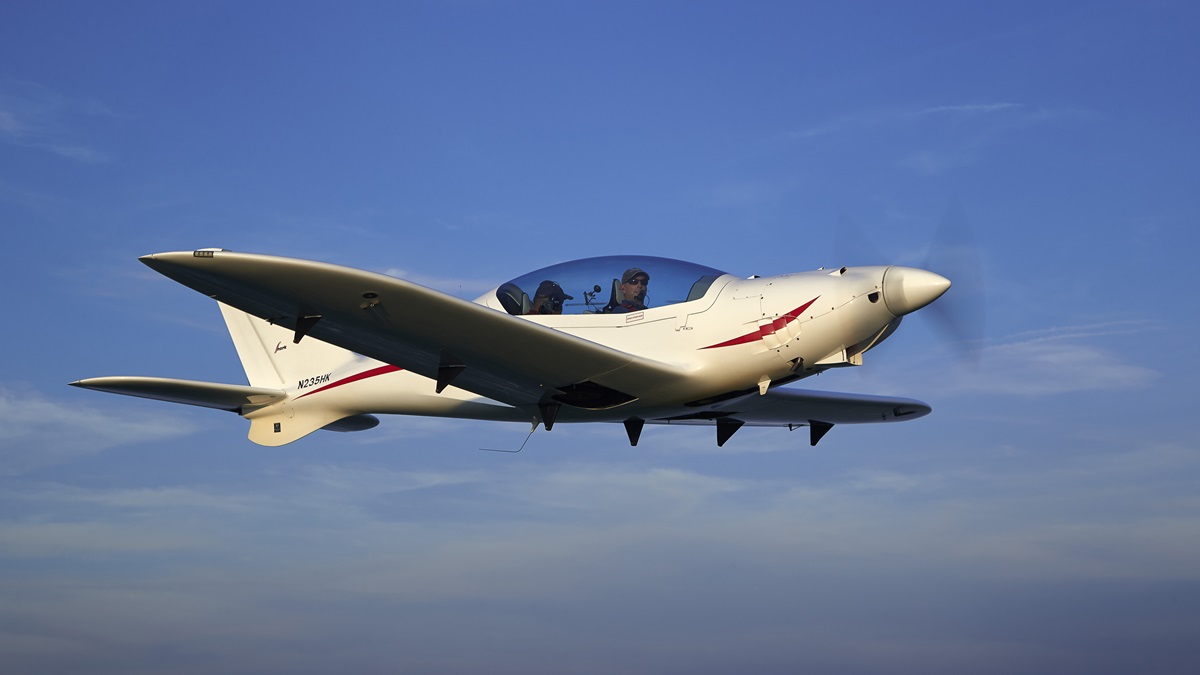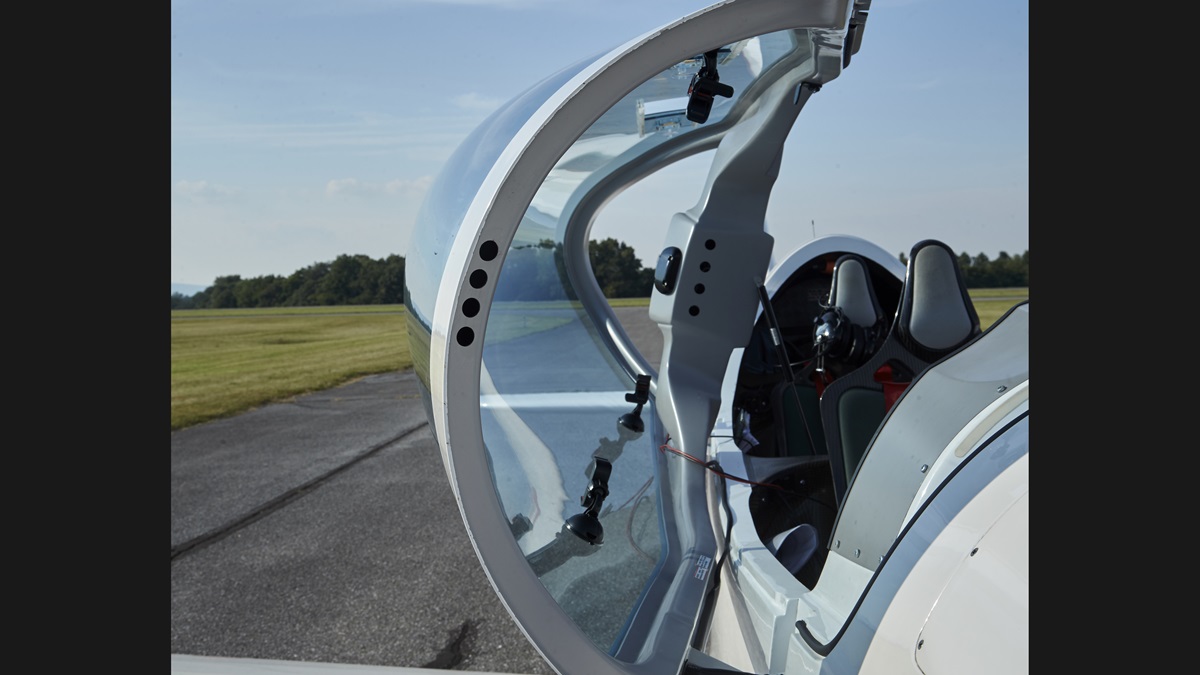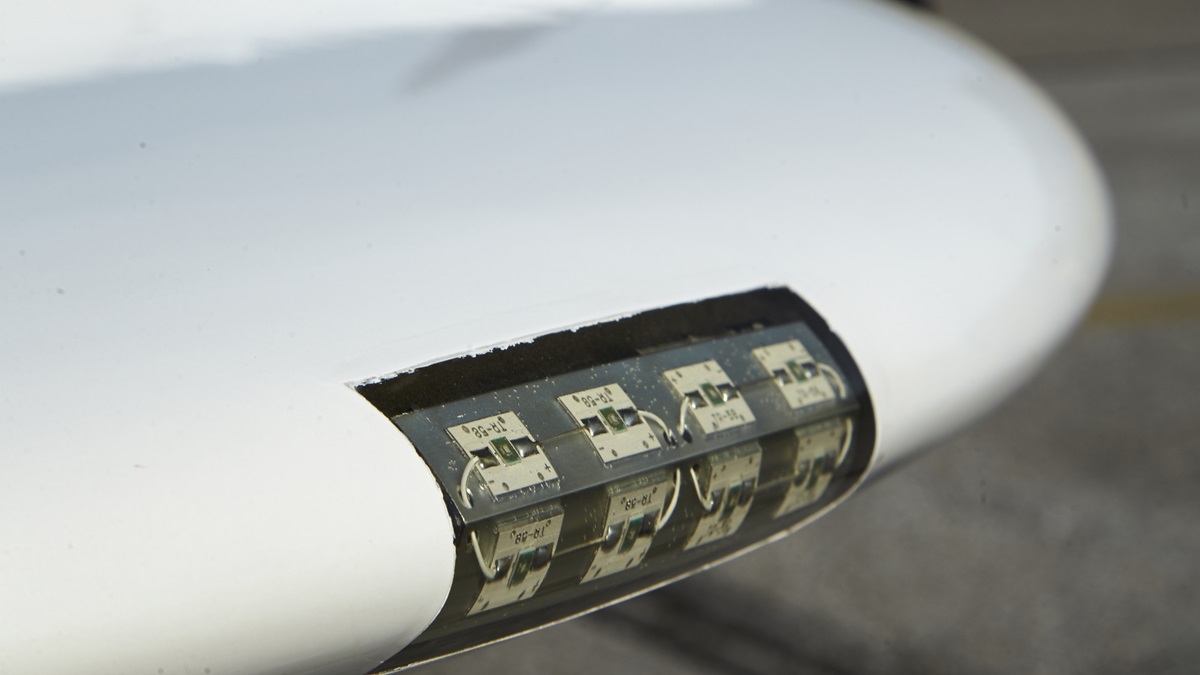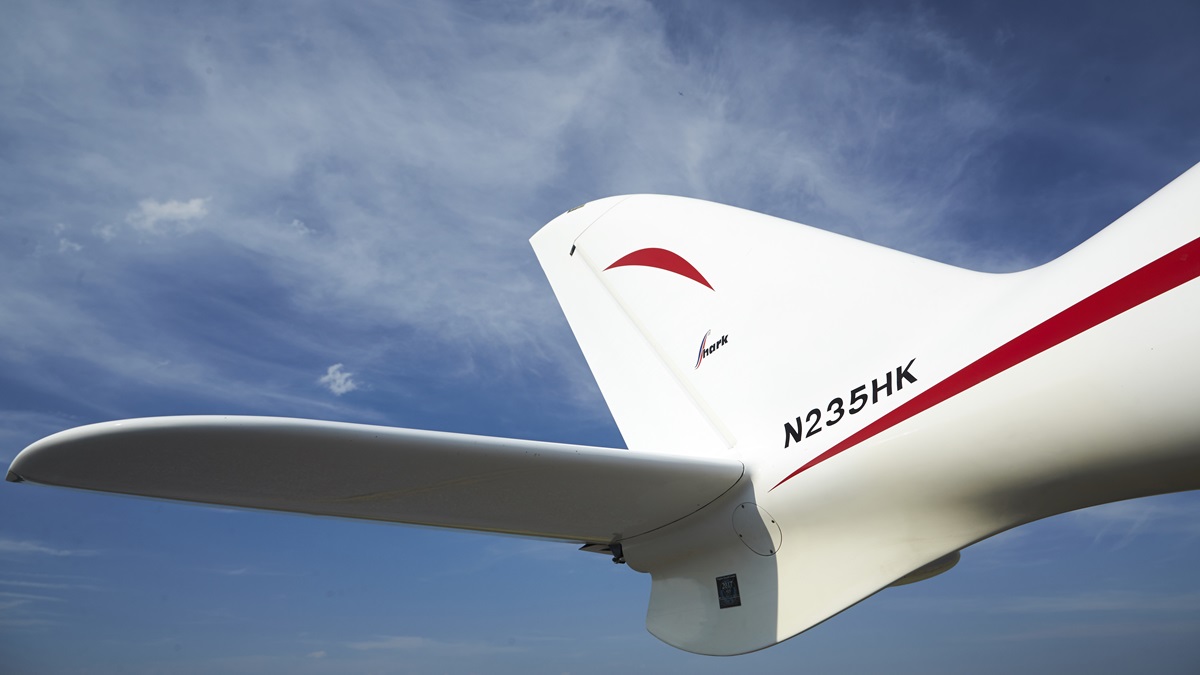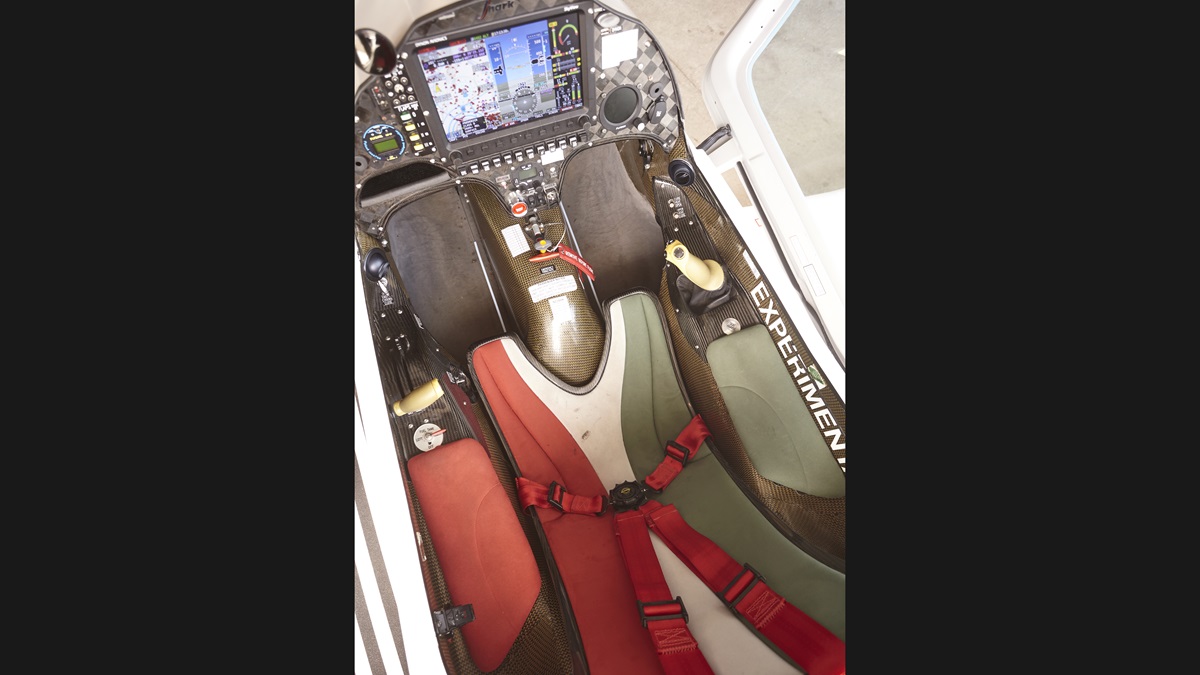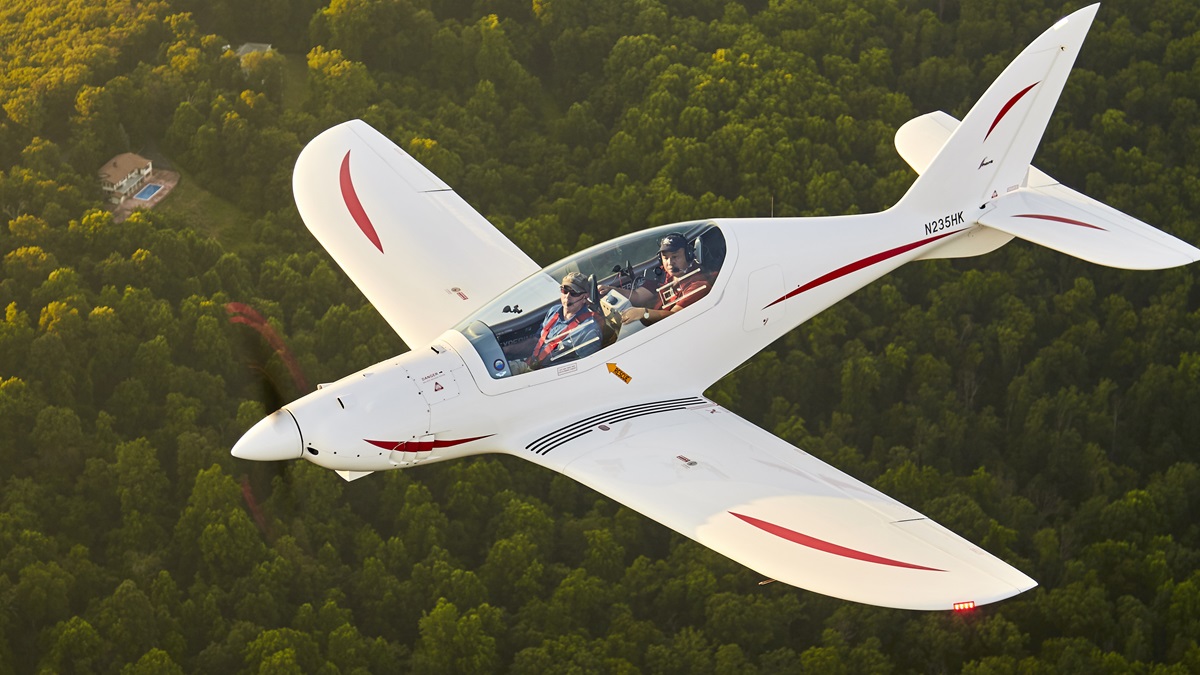Shark Patrol
Fast, efficient category killer
“The first question I always get is, ‘What is it?’” said Jonathan “J.B.” Baron, a former U.S. Navy helicopter pilot who owns this Shark—the first imported to the United States from Europe—and serves as the sole U.S. dealer. “The next questions are, ‘Is it a Light Sport aircraft?’ and ‘Did you have to build it yourself?’”
(The answers to the second two questions are no and no.)
But Baron usually begins by explaining that the Shark is, at heart, a sporty and efficient “twenty-first century airplane” made in Slovakia that uses lightweight materials and complex aerodynamic shapes to deliver a remarkably broad range of performance. The Shark, for example, stalls at less than 45 knots, yet it cruises at 146 and can reach 159 knots in level flight.
With encouragement from Baron, I apply full aileron deflection and the Shark’s roll rate of about 120 degrees per second quickly lays the lush, green terrain of northern Virginia on its side.
“The Shark was made for maneuvering,” Baron said. “It does whatever you tell it to do.”
Autobahn rules
The Shark—like competitors Blackshape Prime (Italy), JMB Aircraft VL3 (France), Pelegrin Tarragon (Latvia)—is built under European regulations for “ultralight” aircraft that, somewhat surprisingly, are far less restrictive than U.S. rules for Light Sport aircraft. Europeans don’t impose airspeed limits (120 KCAS in the United States), and they allow retractable landing gear and variable-pitch propellers, which aren’t permitted here.
The result is a growing niche of small, sleek, efficient, thoroughly modern, factory-built aircraft with astonishing speed and range. The Shark, for example, can cover almost 800 miles at 146 knots, and more than 1,000 miles at 108 knots. The Blackshape Prime, VL3, and others deliver similar performance.
There’s almost no chance of loosening U.S. LSA rules to allow for higher speeds, variable-pitch props, or retractable landing gear—but the long-planned rewrite of the FAA’s Part 23 regulations that cover aircraft manufacturing and certification might allow these European aircraft models to fly here without restrictions.
David Oord, AOPA’s senior director of regulatory affairs, said the most likely path to bring Shark-like speed and efficiency to U.S. pilots is through Part 23 reform. Europe has adopted streamlined certification standards under what it calls Certification Specification 23 (CS-23), which was designed to make it less expensive and time consuming to certify airplanes there. The FAA has reciprocal agreements with European aviation regulators, so airplanes approved under CS-23 could fly here without restriction.
“The revisions to Part 23 here and in Europe have opened a streamlined path for aircraft just like this,” Oord said. “That would be a much better fit, and ultimately easier than trying to change U.S. Light Sport aircraft regulations.”
Shark Aero, the Slovakian company that manufactures the Shark, doesn’t have CS-23 certification, so Baron’s Shark is registered as an Experimental-Exhibition aircraft in the United States, which requires him to send the FAA a fax whenever he flies away from his home airport at Warrenton, Virginia, to attend aviation gatherings elsewhere.
“I don’t have to ask permission,” he said. “I just notify them, and that’s good enough.”
Circling the Shark
From the cooling “gills” on the side of its engine cowl to the highly swept and pointy vertical tail, the Shark has design elements to fit its name. But the diminutive airplane hardly seems like a fearsome predator.
The trailing-link main landing gear looks particularly forgiving, and the wide chord of its low wings seems designed to tolerate a broad range of loads that can shift the airplane’s center of gravity fore and aft.
The 100-horsepower Rotax 912 ULS engine is a thoroughly known quantity. The Italian-made FP Propeller is a variable-pitch, composite model that the pilot treats as if it were a fixed-pitch propeller. There’s no separate propeller control, and blade pitch adjusts automatically for optimum engine rpm during takeoff, climb, cruise, and descent.
The pilot occupies the front seat when flying solo, but the rear seat has a full set of dual controls and a primary flight display that’s cleverly attached to the canopy frame.
The wing is so low to the ground that it’s easy to step directly onto the wing walk. Climbing into the cockpit is a simple matter of swinging a leg over the side rail, then lowering yourself into the carbon-fiber seat. Once buckled into the four-point harness, the side-hinged canopy folds over and latches securely into position. A sliding window on the left side of the canopy supplies ventilation on the ground.
The seat is incredibly comfortable and the Kevlar cockpit is surprisingly roomy. The rudder pedals are adjustable; the sidestick control with the hat-style trim switch falls neatly into my right hand, as does the left-hand throttle.
Engine start is normal for a Rotax. Just turn on the electrical master, fuel pump, and dual electronic ignitions, then press the Start button. There’s no mixture knob.
Engine information is displayed on a 10-inch Dynon Skyview with a split screen for the primary flight display and moving map. A lightweight Becker com radio is clear and easy to hear, along with the voice-activated intercom.
Ground steering requires differential braking, and soon we’re aligned with the runway for takeoff. Even at nearly maximum gross weight on an 84-degree-Fahrenheit day, takeoff acceleration is smooth and quick, and Baron advises light back-pressure at about 25 KIAS, then holding a shallow nose-up attitude with the nosewheel off the ground. The airplane flies off the pavement at about 40 KIAS after an eight-second ground roll that covers about 600 feet, against a five-knot headwind.
I pitch for 80 KIAS and bring up the landing gear with a toggle switch on the top left corner of the instrument panel. The gear cycles in about three seconds, and we accelerate to a cruise climb of 110 KIAS. At 3,000 feet I level off and let the airspeed rise to 140 KIAS while fuel consumption is steady at 5.5 gph. When flying alongside the photoship at 110 KIAS, the Rotax sips fuel at less than 4 gph.
This airplane is set up to be a trainer, so it’s rigged for relatively heavy aileron breakout forces that damp the ailerons, but it creates an artificial feel that I find objectionable. It takes significant force to break the ailerons out of the neutral position, and they get lighter as deflection increases. Other Shark models aren’t rigged this way, and I’d much prefer lighter and more linear aileron forces in nontrainer models. Pitch forces are light but linear, and they’re just about ideal.
Steep turns, lazy eights, and chandelles are precise and thoroughly enjoyable with the expansive view.
The electrically actuated flaps have three positions, and slowing the Shark down to flap speed requires planning. The airplane is so aerodynamically clean that Baron says a slight climb may be necessary on downwind to slow down enough to deploy them.
We make an overhead approach at the nontowered Warrenton-Fauquier Airport in Virginia and decelerate to 70 KIAS on downwind, then lower the landing gear and flaps. Once fully down, the flaps supply ample drag, and holding the recommended 60-knot approach speed at a descent rate of 500 fpm requires slightly more than idle power.
The elevator has enough authority to hold the nosewheel off the ground well after the mains have touched down, and doing so provides aerodynamic braking. We touch down at about 55 KIAS and roll about 500 feet with light braking during rollout with no wind.
Happiest times
When Baron retired from Navy flying in 2016, he set out to find an airplane that could re-create the feeling of flying a Beech T–34 Mentor, the fixed-wing aircraft he flew during training. “Some of my happiest times in the Navy were flying solo in the T–34,” he said. “I wanted to find something like that without the expense of operating a warbird.”
He happened to be in Italy during his last Navy assignment, and it was there he came upon the Shark—an airplane that gives him the same sort of joy.
The Shark is a revelation because it shows that vast improvements in speed and efficiency are available at the light end of the general aviation market. The Shark and its Euro brethren squeeze more out of 100 horsepower than I would have thought possible—and even more performance is sure to become available with bigger engines, such as the only slightly heavier 135-horsepower Rotax 915 iS engine that first flew in April 2017.
It’s unfortunate that U.S. LSA rules include the arbitrary 120-knot top speed and prohibitions against performance-enhancing variable-pitch props and retractable gear. The FAA has stubbornly resisted any changes to the existing rules. But if the new Part 23 opens the door to sleek, fuel-efficient, category-defying aircraft like the Shark, it can’t happen soon enough. U.S. pilots appreciate speed and efficiency as much as Europeans—and airplanes like the Shark could make American skies feel like the speed-limit-free autobahn.
Email [email protected]

